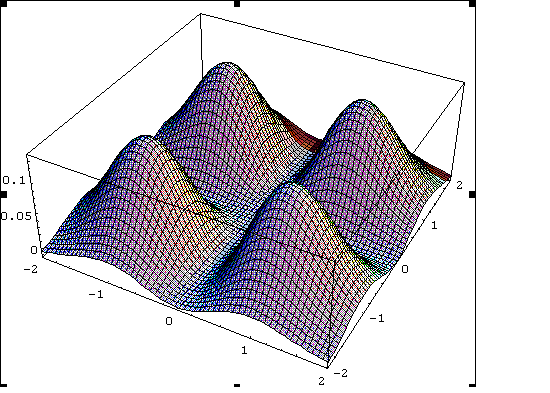
Chaotic scattering
Disponible tembien en ESPAÑOL
We can envision scattering as a particle that moves toward a fixed target p, interacts with it, an then leaves the region. Let us consider a particle moving in a potential V(x,y) without friction , this potential rule the interaction between the particle and the target. For going on with our experiment, we aditionally should know the particle´s initial velocity and position, the last is what we are going to call impact parameter b. Finally, when the particle leaves the scattering region, we measure the direction it takes. This direction being caracterized by the scattering angle, and is equal to the angle that makes the velocity vector with a fixed axe.

Let us consider the repulsive potential :
V(x,y)= x2 y2 exp[-(x2+y2)]
We clearly see, that the potential has four maxima, in the coordinates (1,1) , (-1,-1) , (-1,1) , (1,-1). At this maxima the potential energy has a value of v(x,y) = 1/e^2 = Em. Next, we can find that the scattering is related to the ratio E/Em, E being the particle´s energy

1- Lets prepare a simulation, in this case the particle´s energy being above the potential Em. The parameter values should be adjusted as: mass=1, vel. in x=1, vel. in y=0, initial b=-1, final b=1, delta=0.05. ¿what behavior do you see in the graphic? Remember to push the start button.
2- Lets try again with an energy slower than Em,The parameter values are : mass=0.5, vel. in x=0.5, vel. in y=0, initial b =-1, final b=1, delta=0.05. In wich regions do you observe abrupt changes in the graphic?
3- Lets try again with the last energy, but this time lowering the b values range, and seting delta more fine. The parameter values are : mass=0.5, vel. in x=0.5, vel. in y=0, initial b=-0.5,final b=0.5, delta=0.005. Do you still observe abrupt changes?
4- Do your own experiments, but this time, set the potential as atractive.